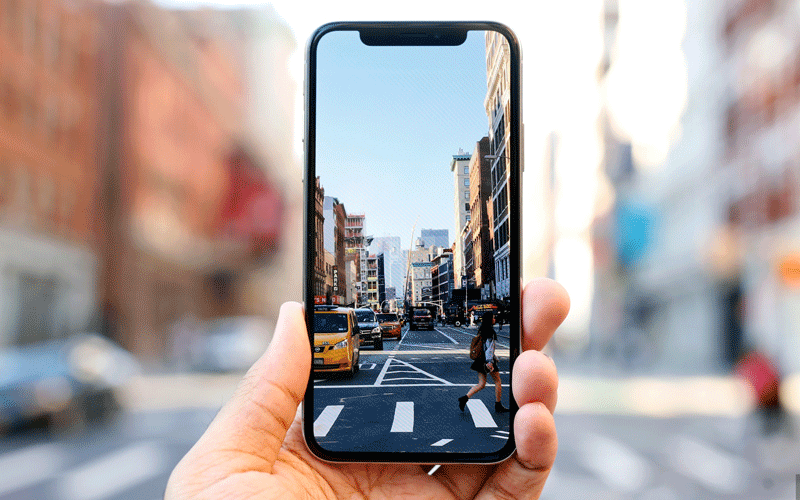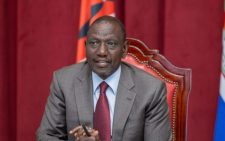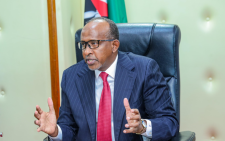Ten African countries with the highest mobile phone penetration

Mobile phone penetration is skyrocketing throughout Sub-Saharan Africa (SSA). As mobile phone technology becomes more widespread and less expensive, more SSA citizens will have access to technology that was previously inaccessible. According to GSMA’s Mobile Economy Report Series, 84 per cent of the population (a billion people) will have access to a SIM connection by 2025, a 3.7 per cent increase compared to 2017 rate. Here are the continent’s biggest mobile consumers according to the Mobile Economy Report
1. Kenya
Kenya’s mobile phone penetration rate stands at 91 per cent. A large majority of basic phone owners, at 79 per cent and 88 per cent of smartphone users, report using their device to send or receive money.
Kenya Integrated Household Budget survey released in April by Kenya Bureau of Statistics shows that at least 30 per cent of mobile users in Kenya own more than one SIM card, translating to an average of 1.3 SIM cards per subscriber.
Social media penetration has also contributed to high smartphone buys as 8.3 million Kenyans are active on social sites.
2. South Africa
Today about 20 to 22 million people in South Africa (SA) use a smartphone which is equivalent to 80 per cent penetration.
The number of smartphone users is forecast to grow by more than five million by 2023.
There are three mobile network operators in SA, which account for about 90 per cent of the overall market: Vodacom, MTN, and Cell C. Vodacom has the largest share of subscribers at around 40 per cent.
3. Ghana
A 2018 report on the Ghanaian Mobile Sector by Jumia, showed the country is one of Africa’s largest mobile markets, with about 34.6 million subscribers.
The Jumia report further revealed that there are 10.11 million active internet users in Ghana, meaning nearly half of the country’s population have access to the internet.
4. Senegal
Senegal’s economic growth has improved steadily in recent years, with the Gross Domestic Product has grown at about seven per cent in 2017 and 2018.
This has translated into consistent growth in the telecom market, with the number of mobile subscribers increasing 4.5 per cent in the year to June 2018.
Orange Group’s local subsidiary Orange Senegal, Sonatel, is the dominant player in both the fixed-line and mobile sectors.
5. Nigeria
The Information and Communications Technology sector in Nigeria which subsumed the digital economy grew from one per cent in 2017 to become the second-fastest-growing sector with a growth rate of 9.7 per cent in 2018.
The mobile telecommunications sub-sector contributed 7.4 per cent to the country’s total GDP in 2018 compared to 5.5 per cent in 2017.
Currently, 44 per cent of mobile subscribers in Nigeria are using 3G technology and four per cent are using 4G technology.
6. Egypt
The number of mobile service subscribers in Egypt declined 5.5 per cent year-on-year in October last year to record 94.3million, down from 99.8 million in October 2017, according to an ICT Ministry report.
This brought Egypt’s mobile phone penetration rate to 102.5 per cent by the end of October.
7. Tunisia
The number of mobile subscribers has grown from 4.7 million in 2008 to 8.8 million last year, reaching 75 per cent unique subscriber penetration.
This rapid growth has been facilitated by investment in the sector by Tunisia’s mobile operators, with full 2G population coverage, and high levels of 3G (99 per cent) and 4G coverage (75 per cent).
8. Morocco
Morocco’s smartphone penetration rate among mobile phone users rose to 73.4 per cent at the end of 2017 from 67 per cent a year earlier, according to a national representative survey carried out by national regulator ANRT.
Among smartphone owners, 86 per cent (representing 19.6 million users) accessed the internet from their handset.
Across the population as a whole, internet take-up increased to 70.2 per cent of households, from 68.5 per cent in 2016.
9. Tanzania
Tanzania had 40.1 million mobile phone subscribers last year, down from 40.17 million in 2017. Major mobile phone operators in Tanzania include Vodacom Tanzania, Tigo Tanzania, which is part of Sweden’s Millicom, Bharti Airtel Tanzania, and Halotel, owned by Vietnam-based telecoms operator Viettel.
The fast-growing sector has been hit by tighter regulations and a price war among the operators in recent years.
Around 19 million internet users in Tanzania accessed the internet last year through their mobile phones, up from 18 million in 2016, the State-run Tanzania Communications Regulatory Authority said in a report.
10. Uganda
Almost 24.8 million or 70.9 per cent of Ugandans own mobile phones, a report by the National Information Technology Authority Uganda (NITA-U) in 2018 revealed.
With 15.8 per cent of the population owning smartphones, the young (15-24 years) are at the forefront of gadget usage at 28 per cent, the report says.
Despite the upward trend, prices of mobile phones remain high, pushing one out of three Ugandans (29 per cent) out of the mobile phone revolution.












